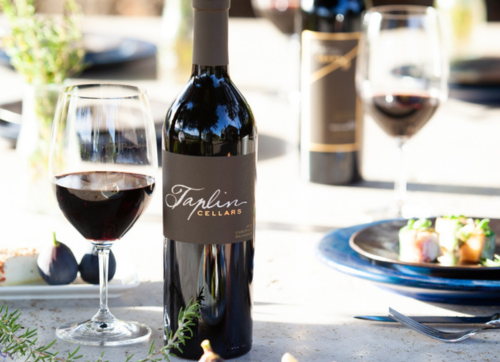Picture it – it’s a Saturday night and you’re cooking something special, so you decide to open a bottle of Taplin Cabernet Sauvignon to go with the meal. Good decision! But before you pop the cork and start pouring, here’s a little insider tip: decanting that bottle could be the difference between “This is good” and “Wow… this is amazing!”
But how do you know if you should decant it? Don’t worry—you don’t need a PhD in wine science to figure it out. Here’s a guide to figuring out when your Napa Cabernet Sauvignon needs a little air time.
First Things First: What Is Decanting?
Decanting is just giving your wine some air. Like people after a long day, some wines need a little time to breathe. Decanting can:
- Soften grippy tannins
- Open up aromas and flavors
- Separate out any chunky sediment (especially in older bottles)
Think of it as stretching before a workout. Your wine is warming up to show its best moves.
How to Tell If Your Cabernet Needs Decanting
Sniff Test
Pour a little into a glass and give it a good swirl. Then sniff.
If it smells like:
- A closed closet
- Rubbing alcohol
- Burnt rubber or egg (seriously, it happens)
Then your wine is probably just waking up and needs some air.
Sip Test
Now take a taste. Ask yourself:
- Does it feel tight or sharp?
- Are the flavors all jumbled or muted?
- Is it all oak and no fun?
If yes, it’s time to break out your decanter!
How Long to Decant? A Quick Guide
🍇 Young & Bold (0–7 years old)
Time: 30 min to 2 hours
These wines are like teenagers—loud, full of energy, and occasionally a little awkward. Decant them generously to help them chill out and show off their best traits.
🍷 Middle-Aged & Smooth (7–15 years)
Time: 20 to 40 minutes
These wines are starting to develop deeper, more interesting flavors. Give them a short decant to help everything come together.
🕰️ Older & Wiser (15+ years)
Time: 10 to 20 minutes max
Handle with care! These wines are delicate and complex. Too much air and they might fade too fast. Decant just enough to wake them up and filter out the sediment, then enjoy the show.
A Few Tips
- Start small. Pour a glass and taste before committing to a full decant.
- Watch the clock. Some wines open up fast and then fall apart—like Cinderella at midnight.
- Double-decant if you’re in a rush. Pour into a decanter, then back into the bottle. Instant glow-up.
- No decanter? No problem. Use a clean glass pitcher, or just swirl your glass like a pro.
Final Sip
Decanting doesn’t have to be intimidating or precious. It’s just another way to make your wine taste even better. Napa Valley Cabernet Sauvignon is a powerhouse, and a little air can turn that bottled beast into a velvet-clad rockstar. So pour, swirl, sniff, sip—and don’t forget to enjoy the moment.
Back to Recent Updates

